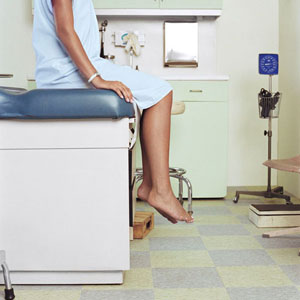Most people with invisible illnesses like postural orthostatic tachycardia syndrome have complex medical issues. Emphasizing to your physician that you are seeking a partner who will help you live your best life (and not necessarily find the magic cure), will help doctors feel that they'll be able to meet expectations and enjoy working with an "interesting" patient, rather than worry that they'll spend endless hours with an angry patient who is not fixable.
General Tips to Help You Prepare
Write an opening monologue that tells the doctor what brings you into their office today. Include current and most troublesome symptoms (even if it is not present that day), and describe how debilitating the illness is. Practice your monologue so that it comes out smoothly when your doctor asks what brings you in.
Prepare a list of questions that you want to ask the doctor. Write these questions down so that you don’t forget to ask them during the appointment. Here are some examples that you might use:
- What would be the harm in my trying this supplement (d-ribose, iron) or medication (Adderall, mestinon)? Listen to their opinion, and ask further questions if necessary.
- If you take anxiety/stress/depression away, what medical conditions might account for my symptoms? What tests would you run for these?
Create a summary of current diagnoses, symptoms, and medications. Symptoms can change over time, but having a current 1-2 page summary document of recent symptoms, intermittent symptoms, current medications and diagnoses can give your caregiver a snapshot of the health issues. If you have had significant past health problems or abnormalities, list those as well. What triggers make you worse? What helps to manage your symptoms? List what therapies, medications, supplements, etc. that you have tried and if they improved your symptoms. Sometimes physicians assume that we are seeking medications, when in fact we have tried meditation, counseling, exercise, physical therapy, acupuncture, etc. without any improvement in symptoms.
Chart your symptoms for the month before your doctor’s visit. Some doctors aren’t interested in this kind of chart, but the best doctors are glad to see the data that you can provide about when certain symptoms develop in an effort to prevent them. It is particularly helpful when trying to answer questions about frequency and severity of symptoms in the doctor’s office.
Print a copy of all test results to carry with you to the appointment. Most hospitals and doctor’s offices offer free electronic access to laboratory results online through MyChart. Print these lab results and put them in a three ring binder by type of test (iron versus complete blood count). Having a hard copy ensures that your doctor can see all of your testing regardless of where they practice. Some doctors will photocopy these and make them a part of your record in their office.
Consider an initial appointment to establish care. When getting a new primary care doctor, consider making an initial appointment to get acquainted with your doctor and to establish a friendly rapport, before digging in to specific medical issues.
It's OK to Seek Multiple Opinions


Feel free to get a second, third or fourth opinion. You don’t have to return to a doctor who you don’t feel helped you.
Don't be afraid to schedule with multiple specialists at once. In POTS, many symptoms develop that appeared to be vastly different systems. Making several appointments at one time with specialists you think might help can be an effective way to get a diagnosis. With wait times, you could see a different specialist every two to three weeks. If you find that physician with the diagnosis that feels right, you can always cancel appointments with other specialists that you have already made.
Maintain good relations even when issues arise. Even if you don't plan to go back to a particular physician, don't burn bridges as you leave. You never know when you might need a letter for disability or insurance, so smile as you walk out the door.
Finding a Good Autonomic Physician
Here are a couple of resources to help you find a good autonomic physician who understands postural orthostatic tachycardia syndrome and other forms of dysautonomia in your region.
- Physician Listing - DINET
- Expertscape
- How to Find a Good Doctor gives excellent general advice for what to look for when you are choosing a new physician.
Brochures to Facilitate Discussion with your Healthcare Practitioner
Some doctors know more than others about dysautonomia and POTS. Print each of these brochures and take them with you each time you visit a new doctor to increase awareness among the medical community.
- What Every Doctor Should Know about POTS
- Scientific Understanding of POTS
- Patient Checklist for First Appointment
If your doctor will only consider articles from the scientific literature, you can look through these pages to find an article that sounds close to your situation. All of these are FREE full journal articles that you can print and take with you or email to your physician.